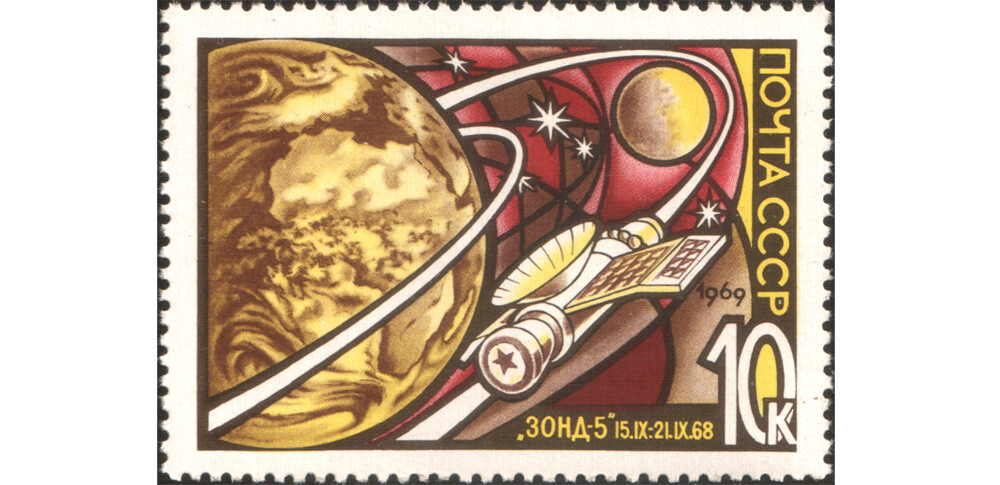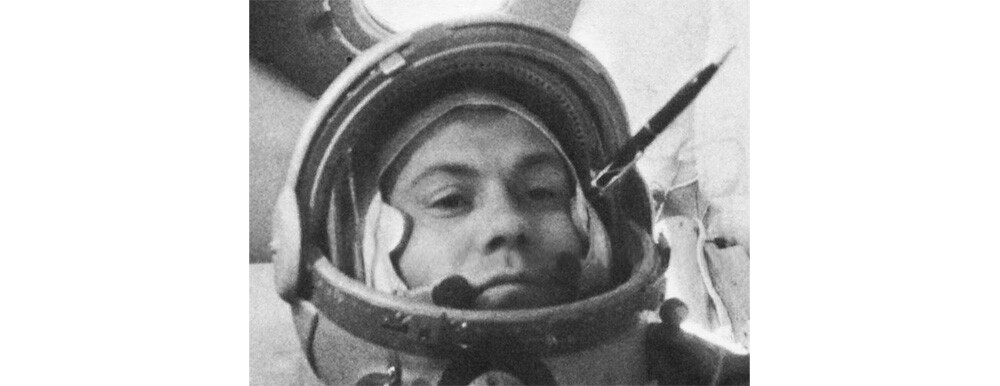5 Goofy Space Mishaps

Space travel can be terrifying. It can send you to a fiery death. You might end up irretrievable and untethered. You could even find yourself in a cat cult.
But when some stuff goes wrong up there, it’s not a tragedy. It’s a comedy.
Skylab Became Convinced A Civilian Had Stowed Away Onboard
Don't Miss
The first (and so far last) wholly American space station was Skylab, which launched in 1973. It received a total of four missions, and the second of these was supposed to feature three astronauts — Jack Lousma, Alan Bean and Owen Garriott.

NASA
We say “supposed to” because once Houston got in touch with the men, they heard the voice of someone else talking back to them. “Hello, Houston, this is Skylab,” said the female voice. “Who is this?” asked ground control’s communications specialist, Robert Crippen. “Hi, there, Bob,” replied the voice. “This is Helen.” Meaning Helen Garriott, Owen Garriott’s wife.
“What are you doing up there?” asked Houston. “Well, we just came up to bring the boys a fresh meal,” responded Helen, which was absurd of course. This just raised further questions, including, “How did you get up there?” to which Helen’s voice replied, “Oh, we just flew up.” And then, adding an air of realism, she commented on the view: “We’ve been looking at those forest fires that they have all over California. It’s a beautiful site from up here.”
No, Owen Garriott had not smuggled his wife aboard the Saturn-1B rocket. He had smuggled aboard a tape player and several recordings of her, so he could quickly switch between voice clips and simulate an ongoing conversation. NASA should have punished him by permanently banning him from space. Instead, they would go on to send him on another mission 10 years later.

Farts Were Maliciously Transmitted into the ISS
Because of physics, farting is inconvenient in space. The fart particles will dissipate eventually, since that happens independent of gravity, but the gas still doesn’t move the way you expect it to. You might well find yourself stuck in a stink cloud that seemingly refuses to move.
When Clayton Anderson went to space in 2007, he discovered that he had especially smelly farts. He discovered this because his crewmates informed him of it, and while he refused to name specifically which ones spoke up, we have no choice but to name all possible suspects: Fyodor Yurchikhin, Oleg Kotov and Sunita Williams.

Anderson was in the shuttle Atlantis, docked alongside the International Space Station. A hose connected the shuttle interior to the docking tunnel between Atlantis and the ISS. So to spare the immediate surroundings of his stink, Anderson took to floating himself up to that hose and farting into it, where it got sucked and sent over to the station. He called these “emails to the ISS,” because he might have been into fart jokes, but he was also a nerd.
Cosmonauts Fooled LBJ into Thinking They Were Landing on the Moon
In 1968, nearly a year before Apollo 11, the Soviet craft Zond 5 became the first spaceship to orbit the Moon. For a while, Moscow had hoped to send men on this mission, but just in case it all ended horribly, they took the safer route and instead just sent two tortoises. These animals had no names (the mission just called them No. 22 and No. 3), but we will choose to call them Shelly and Raphael.

We know all this about Zond 5 today. Back then, however, all outside knowledge of the Soviet space program came from guesswork and spycraft. The West could listen in on transmissions from Soviet spacecraft using the radio telescope at the Jodrell Bank Observatory in England. And when we turned our ears toward Zond 5, we didn’t hear tortoises munching lettuce or making love and shrieking like raptors. We heard people.
The voices came from known cosmonauts Valery Bykovsky, Vitaly Sevastyanov and Pavel Popovich. Wait, people were orbiting the Moon? NASA hadn’t expected that. The men were reciting instrument readouts, and then they started talking about landing on the lunar surface. The actual Zond 5 mission put the Soviets ahead in the space race, but this extra detail would put them super ahead.
In fact, it was a dummy transmission, one a little more complicated than the voice of Helen Garriott. It came from Zond 5, yes, but the craft was relaying a signal from the command center in Yevpatoria, where Popovich was stationed. Popovich would later claim that this was not a deliberate Soviet misinformation campaign but a prank cooked up by him and the engineers. President Lyndon B. Johnson allegedly phoned Frank Borman — astronaut and senior space advisor — saying, “Why is Popovich reporting from the Moon?!” Borman later actually visited the USSR, was received by Popovich and shook his fist at the man, saying, “Hey, you, space hooligan!”

A Good Astronaut Was a Lousy Cameraman
We did make it to the Moon in the end, and that first landing was the most famous TV broadcast in history. Apollo 12 never stood a chance of being as much of a milestone, but it did aim to beat Apollo 11 in one respect: The astronauts in it brought along a color TV camera. It would show the world the true colors of space and the Moon. Which are, respectively, black and white, but still.

The above photograph was taken by Alan Bean using a Hasselblad Data Camera, which snapped still photos. Good job with that, Alan — nothing wrong with that photo. Bean also controlled the Westinghouse lunar camera that would broadcast the live color footage. The camera weighed just 7 pounds, which was a marvel at a time when the smallest TV cameras normally weighed 20 times that. That meant it needed a separate tripod, and while he was setting that up, Bean pointed the camera straight up, right at the sun.
The video camera’s tube, which used electron beams to capture images, totally burned out when hit with that intense light. And that was the end of the lunar TV camera. Astronauts would continue capturing (superior) footage using film cameras, but color broadcasts? The Moon never got them.
Bean didn’t have much luck with film cameras either, by the way. At the end of the mission, the astronauts’ module splashed down into the Atlantic Ocean. During impact, the camera came loose and slammed Bean in the head.

Two Cosmonauts Were Stuck in Space When the Soviet Union Collapsed
Sergei Krikalev went to the Mir Space Station in May 1991. His two crewmates, including a woman from Britain, returned to Earth at the end of the mission, while Krikalev stuck around for the next one, now joined by new cosmonauts. Those new cosmonauts came, and then some of them went back down, leaving just Krikalev and new guy Aleksandr Volkov. Eventually, it was time for them to go back, too. Only problem was, in the meantime, the Soviet Union collapsed.

Yes, the country that sent them up to space no longer existed. Well, Russia existed, but it wasn’t able to bring the guys back so easily. For starters, the spaceport that sent out flights wasn’t in Russia, it was in Kazakhstan. Kazakhstan was now charging a lot for Russia to use the Baikonur Cosmodrome, and Russia didn’t have the money to spare. They later worked out a deal, giving Russia a discount for sending up the first Kazakh cosmonaut, but that couldn’t happen immediately, since Kazakhstan didn’t have anyone fit for the job.
Months passed. Russia did manage to scrape together enough money to send up supplies, so Krikalev and Volkov at least didn’t starve to death, but they were stranded. It’s even rumored that Krikalev’s name came up for mandatory military service, and Russia prepared to charge him with desertion, before remembering they left him in space. When the guys finally came back down, Krikalev had been up twice as long as planned.
It’s enough to make someone swear off space for life. Not Krikalev though. He flew back up with Americans, commanded a later mission on the ISS, and he’s still in the space program today, mediating cooperation between the U.S. and Russia in space throughout this whole Ukraine thing.
Getting marooned in the heavens from a now nonexistent country is a pretty good way of learning to laugh off all divisions between nations.
Follow Ryan Menezes on Twitter for more stuff no one should see.